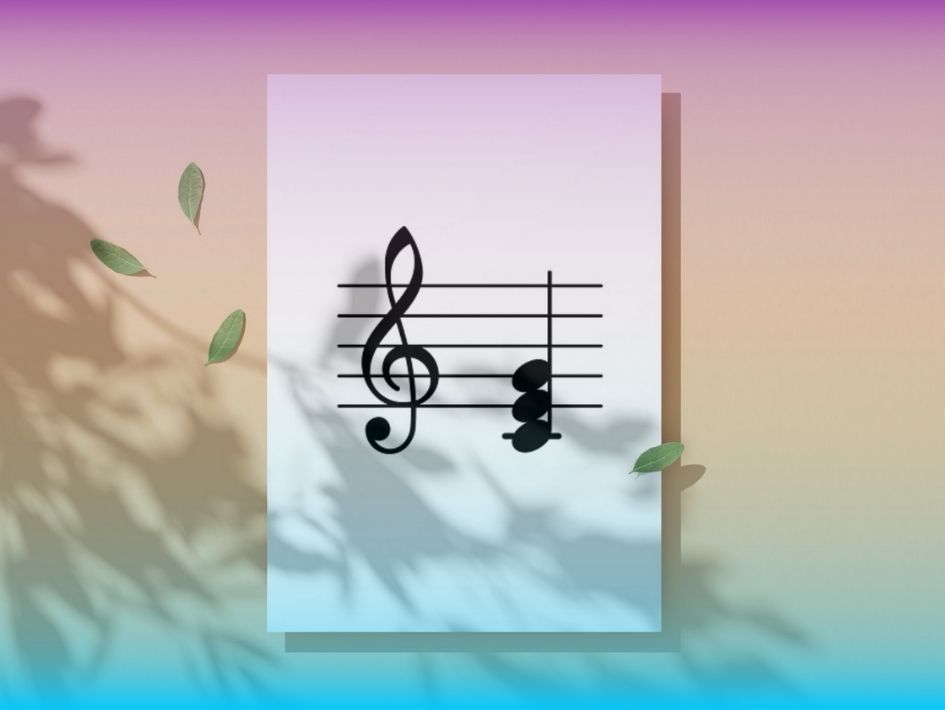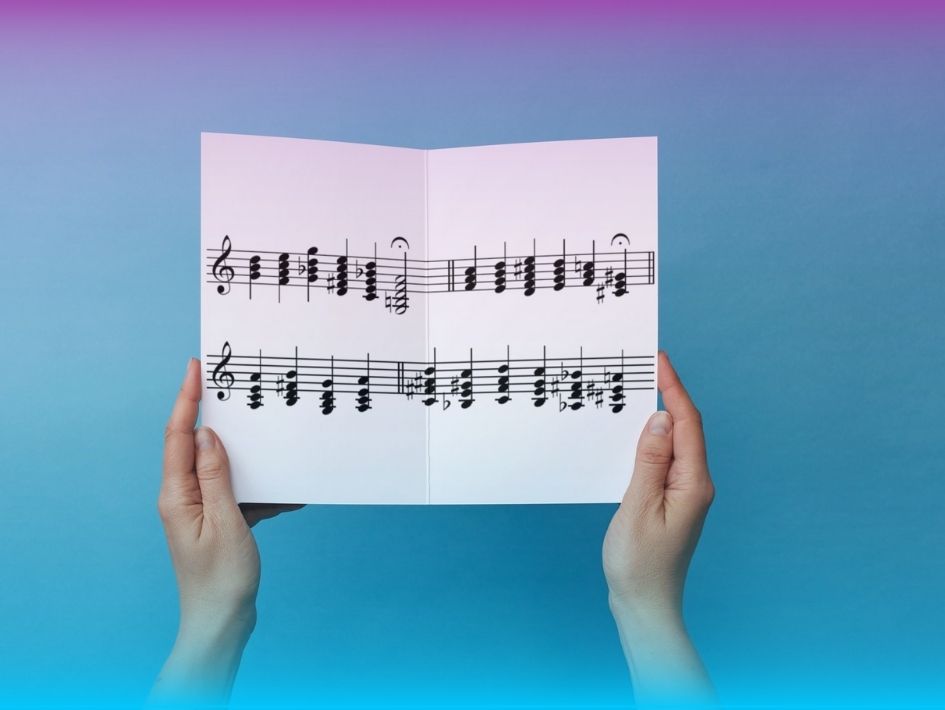Dissonance brings emotion to music. It creates tension and a feeling of suspense. When this tension resolves, it feels calming and complete. Dissonance and consonance (harmony) make the music feel like a story. Dissonant intervals build suspense, while consonant chords bring calm.
This blog explores how dissonance in music works, why musical tension matters, and how this balance shapes a listener’s experience.

What Are Dissonance and Consonance?
Dissonance and consonance are musical opposites. Dissonance is when notes sound tense, creating a sense of conflict. Consonance is when notes sound smooth and bring peace. Together, they make music engaging and impactful.
When notes clash, dissonant intervals create harmonic tension. In contrast, consonant chords feel stable and resolved. This shift from dissonance to consonance lets listeners feel relief, a release that makes music satisfying. These contrasts keep the listener engaged and excited to hear what comes next.
A dissonant chord might seem jarring at first, but it plays a key role. By setting up tension, dissonant chords make the return to consonance more satisfying. This pattern helps shape each piece of music, giving it a clear sense of movement and emotion.
Why Tension in Music Matters
Tension keeps the music interesting. Without it, a song could feel too predictable. Dissonant intervals and chord progressions create suspense, making us curious to hear what’s next. This musical tension drives a song’s emotional power.
Composers use dissonant chords to express sadness, fear, or worry. When these chords resolve, they bring a sense of peace. This push-and-pull creates a deeper connection to the music and strengthens a song’s emotional impact. Music with both tension and release feels complete and well-rounded, like a story with a clear beginning, middle, and end.
How Dissonance Affects Emotions
Dissonance stirs emotions by creating tension, unease, or excitement. When composers use dissonant chords, they build suspense, which mirrors real-life feelings and makes music more personal.
For example, in classical music, dissonant chords may appear in moments of conflict or struggle. When the tension resolves, it brings calm and satisfaction. This switch from tension to calm makes the music feel complete and keeps listeners engaged.
This relationship between musical dissonance and emotional response is one of music’s most powerful tools. By creating a sense of instability and resolving it, composers can take listeners on an emotional journey.
Tension and Release: A Reflection of Real Life
The cycle of tension and release in music mirrors real life. We face challenges and find relief. Music uses musical tension and release to tell a story. This pattern makes the music feel relatable.
By mixing musical dissonance with moments of calm, composers create suspense, followed by relief. This balance keeps listeners engaged, making music feel like a shared experience. It’s almost like going through a storm and finally finding shelter—the tension adds depth, while the release brings comfort.
This cycle also helps create intense emotions in music. When we hear harmonic tension in a piece, we can feel the unease or excitement. When the tension resolves, it’s almost like a breath of fresh air. This flow of tension and resolution connects with listeners on a deep, personal level, much like the highs and lows of life itself.
Resolution in Music: Releasing Tension
When dissonant chords resolve, they bring relief. This release feels satisfying and completes the musical journey. The shift from dissonant intervals to consonant ones gives a sense of closure, as if the music has reached a resting point.
In a chord progression, a dissonant (dominant) chord often moves to a consonant (tonic) chord, bringing balance and harmony. Without this cycle, music would feel incomplete, like a story without a resolution, a song without consonance after dissonance feels unfinished.
Resolution is what makes
musical composition feel balanced. It gives each piece of music a clear path, allowing tension to build and resolve. This process creates depth and adds emotional weight to the music, making it feel satisfying from start to finish.

Dissonance in Different Music Genres
Dissonance isn’t only in classical music; it’s widespread across many genres, and each one uses it in unique ways to create emotions.
- Jazz: Jazz uses dissonance for excitement in solos and improvisations. Jazz chord progressions often include dissonant chords, which create suspense and unique resolutions. This keeps listeners on their toes and makes each performance feel fresh.
- Rock: Rock music often uses dissonant intervals during intense moments, like a guitar solo or bridge. The clash of sounds creates tension, which resolves, giving the listener a satisfying sense of closure. This back-and-forth makes rock music energetic and powerful.
- Electronic Music: In electronic music, dissonance might come from layered harmonies or synthesizer effects. These often lead to a "drop” or breakdown, where the tension builds and then releases in an exciting way. This technique is widely favored in dance music, where the release gives the listener an exhilarating moment to enjoy.
Each genre brings its flavor to dissonant intervals and musical dissonance. While classical music may focus on structured harmony, other genres often explore tension and resolution with more liberty, creating deep emotions in more ways.
The Science of Dissonance and Consonance
Dissonance and consonance aren’t just ideas, they’re tied to the science of sound. Dissonant intervals happen when two notes clash, creating sound waves that don’t align. This clash feels jarring and creates harmonic tension.
Consonant intervals, on the other hand, create smooth, pleasing sounds. For instance, a perfect fifth interval (like C and G) is consonant because the sound waves align well. A minor second (like C and C#) is dissonant because their sound waves create interference.
These scientific principles help explain why dissonance creates tension. Our brains respond to these sound patterns, finding some comfortable (consonance) and others unsettling (dissonance). This response is why musical dissonance feels so powerful. It’s not just an idea; it’s a part of how we hear and process sounds.

Composers’ Use of Dissonance
Many composers use dissonance to create strong emotions. Beethoven used dissonant chords to add intensity, followed by resolution for relief. Stravinsky’s The Rite of Spring shocked listeners by using extreme musical tension and pushing the boundaries of dissonance.
In the 20th century, composers like Schoenberg and Bartók took dissonance to new heights with atonality and complex harmonies. They experimented with tension and resolution, giving their music a raw, emotional edge. Even today, modern composers continue to explore dissonance to create a profound emotional impact in their works.
Dissonance in Music Education
For musicians, learning dissonance is key. They study how to create and resolve musical tension in ways that move listeners. In jazz, for instance, musicians often play "out of key,” creating tension by choosing unexpected notes. Then, they find a way to resolve them, adding depth to their performances.
In classical and modern music education, learning to balance dissonance with consonance is essential. This understanding allows musicians to play with tension and resolution to create impactful, engaging performances. The cycle of tension and release keeps music lively and memorable.
Dissonance in Film and Video Game Music
Dissonance is also integral in film and video games, where it builds suspense and energy. Think of eerie sounds in horror movies or intense music in action scenes. Musical dissonance adds drama, matching the action on screen.
Film and game composers use dissonance to make scenes feel more intense, which makes the experience more vivid for the viewer.
Dissonance and resolution give music emotional power. Through dissonant intervals and the mix of tension and release, music creates a journey that the listener feels deeply. This blend of tension and calm brings music to life.
Summary
Dissonance in music plays a significant role in creating emotional depth by introducing tension and suspense. As dissonant intervals build this tension, consonant chords provide resolution and relief, creating a powerful emotional impact.
This tension and release mirror real-life experiences, making music more relatable and engaging. From classical to modern genres, composers use dissonance to evoke a wide range of emotions, keeping listeners intrigued and emotionally connected to the music.
Ready to Dive Deeper into Musical Tension and Resolution?
Check out
Muzeg for tutorials, tips, and in-depth resources on using dissonance and consonance to elevate your musical skills. With focused practice, you’ll gain a better understanding of musical tension and release, unlocking new emotional depth in your performances.
Bottom Line
The relationship between dissonance and consonance shapes the emotional flow of music. By balancing tension and resolution, composers craft pieces that resonate deeply with listeners.
This interplay not only drives the emotional experience of a song but also keeps the
music dynamic and engaging, ensuring that the listener remains captivated throughout. Whether in classical compositions or contemporary genres, dissonance remains a key element in emotional storytelling through sound.


